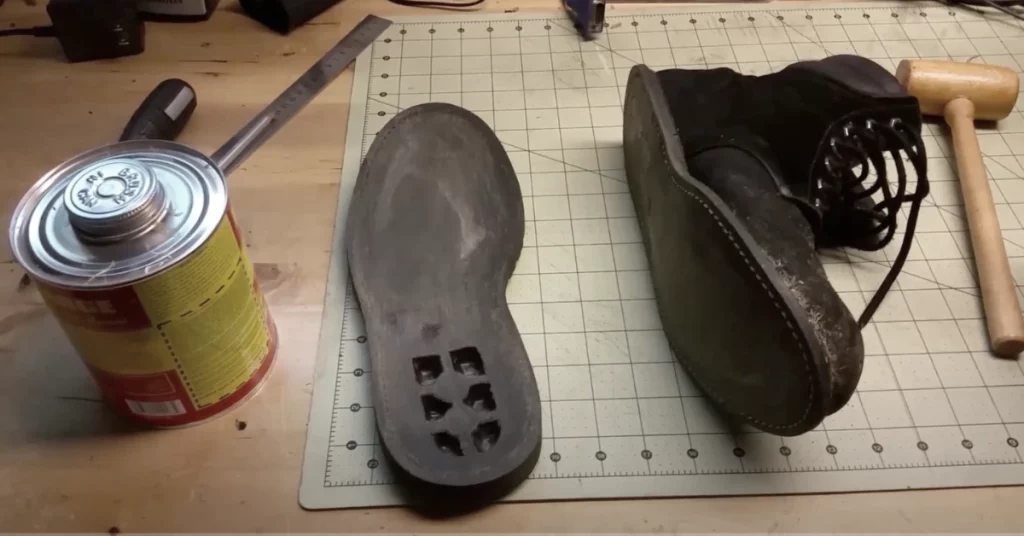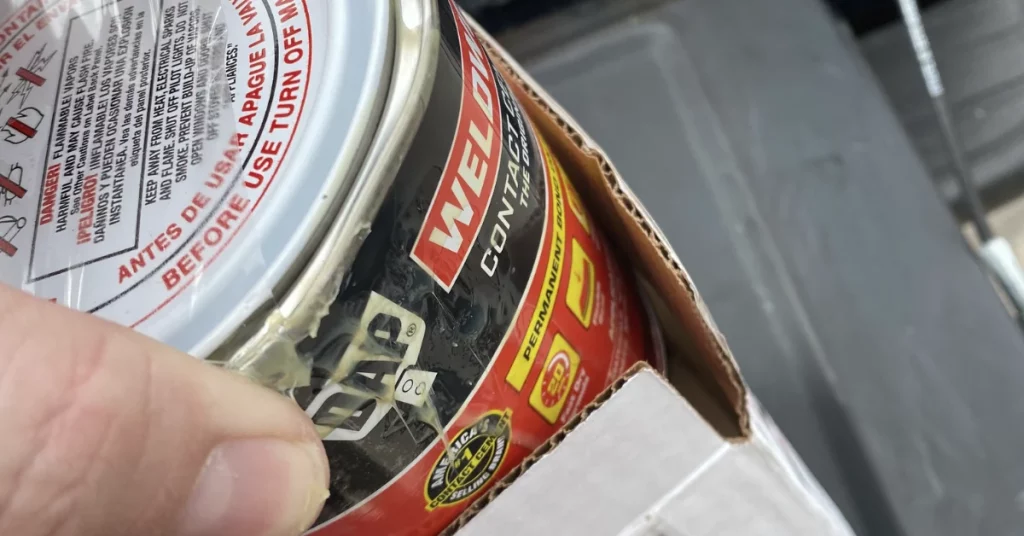Getting the proper type of glue is one of the most crucial aspects of repairing or fixing your old boot. The appropriate adhesive ensures that the components you will be using the glue on bond correctly and for a long time.
Barge Cement and Contact Cement are both viable options for repairing your old boots; however, even though both are adhesives used for multiple purposes, they have their differences. So which one should you go for in the Barge Cement vs. Contact Cement debate?
Read More: Barge Cement vs. Shoe Goo
About Barge Cement
Barge All Purpose Cement is a powdered, water-soluble cement made by Barge Adhesives. Barge Cement is a professional strength adhesive with excellent bonding capabilities.
Barge Cement comes in two variants – the original and the toluene-free (TF) variant. Barge Cement has excellent bonding capabilities for – Leather, Rubber, Vinyl, Wood, Metal, Plastic and more, so it is a perfect choice for improving your shoes or other household DIY fixes.
Barge Cement is water-soluble and waterproof when it forms a proper bond. Barge Cement has a comparatively longer open time than other glues, so you have a longer time to use the glue properly.
Since it is toxic, you must take some cautionary measures while working with Barge Cement. Barge Cement comes in Pints, Quarts, and Gallons. Barge TF Cement is available in smaller tubes of .75 oz and 2 oz besides Pints, Quarters, or Gallons.

Read More: How Does Contact Cement Work?
About Contact Cement
Contact Cement comes in solvent and water-based forms depending on which brand and specifics you go for, and it’s a quick-drying adhesive. As its name suggests, Contact Cement creates a robust and rigid bond between surfaces in contact.
Contact Cement works well with various materials like – Plastic, Rubber, Veneer, Rubber, Leather, Glass, and Metal. Contact Cement forms a rigid bond and restricts further movement once fully cured.
Contact Cement dries within minutes of application, making it an ideal choice if you’re looking for a quick repair. However, it also means there is little to no margin of error.
Furthermore, Contact Cement will not be ideal for you if you’re planning further adjustments or repairs down the line since it can be difficult to remove when fully cured.
Since Contact Cement creates a rigid bond between materials, it’s a good choice if you use the shoe or materials under extreme force or pressure. Contact Cement is waterproof; however, it’s less feasible than Barge Cement for underwater usage.
If you go with solvent-based contact cement, keep aware of the substrates which dissolve the glue and ensure your shoe doesn’t come in contact with them.
Read More: Contact Cement vs. Rubber Cement

Differences Between Barge Cement and Contact Cement
Now that I’ve gone over what Barge Cement and Contact Cement are let’s take a look at their differences.
Appropriate Materials to Use On
Barge Cement is an industrial-grade glue that sits well with many materials. It is ideal to use for materials like – Wood, Vinyl, Rubber, Plastic, Leather, Glass, and Polyvinyl Chloride. For shoes, it will work well with Leather or Rubber. You can use it to reattach soles or use it as a sealant.
Contact Cement works well with various materials as well. It is excellent to use with – Glass, Metal, and Plastic for household DIY repairs. You can use it for shoes made of Rubber or Leather. Contact Glue is excellent to use for shoes that withstand excessive force.
Drying Time
Both of these glues have a faster drying time than many other alternatives.
Barge Cement dries between 10 to 15 minutes once the surfaces are connected. Furthermore, it also has an open time of 4 hours, so you can apply the glue on the surfaces and have some time before sticking them together.
Contact Cement also has a fast drying time ranging from 10 to 15 minutes, depending on the thickness of the layers.
Potential Hazard Risk
Barge Cement is highly toxic, and you need to take cautionary measures while using it. It is flammable and contains risky elements to inhale, so use rubber gloves and eye protection gear to ensure your room has enough ventilation.
Contact Cement is harmless unless it comes directly in contact with you.
Read More: Shoe Goo vs. Contact Cement
Last Opinion
Barge Cement and Contact Cement are both excellent adhesives suitable for many purposes. So which one to go for in the Barge Cement vs. Contact Cement debate? Barge Cement is ideal than Contact Cement for underwater usage. Unless you plan to use your boots underwater, Contact Cement can be a better choice for you.

